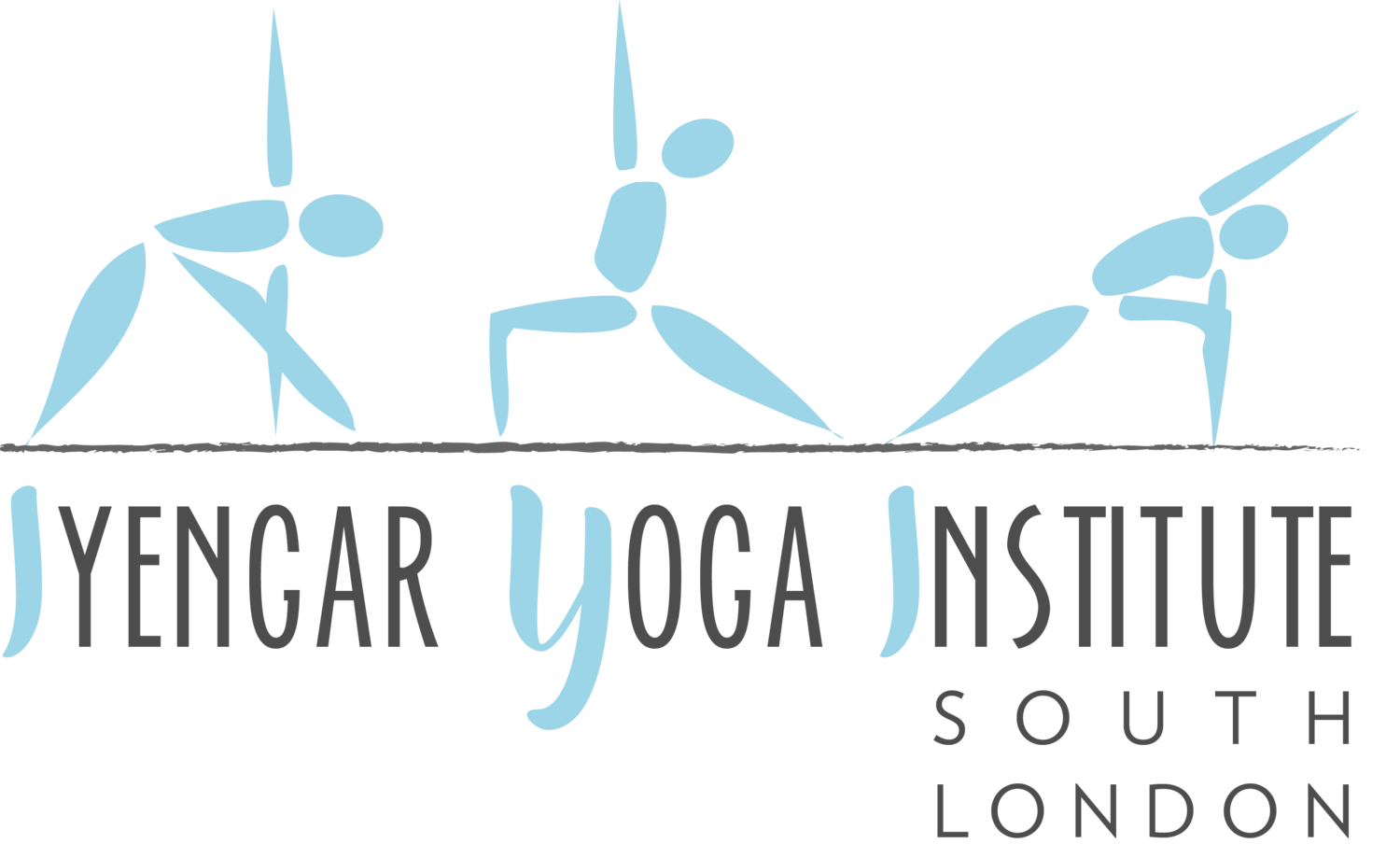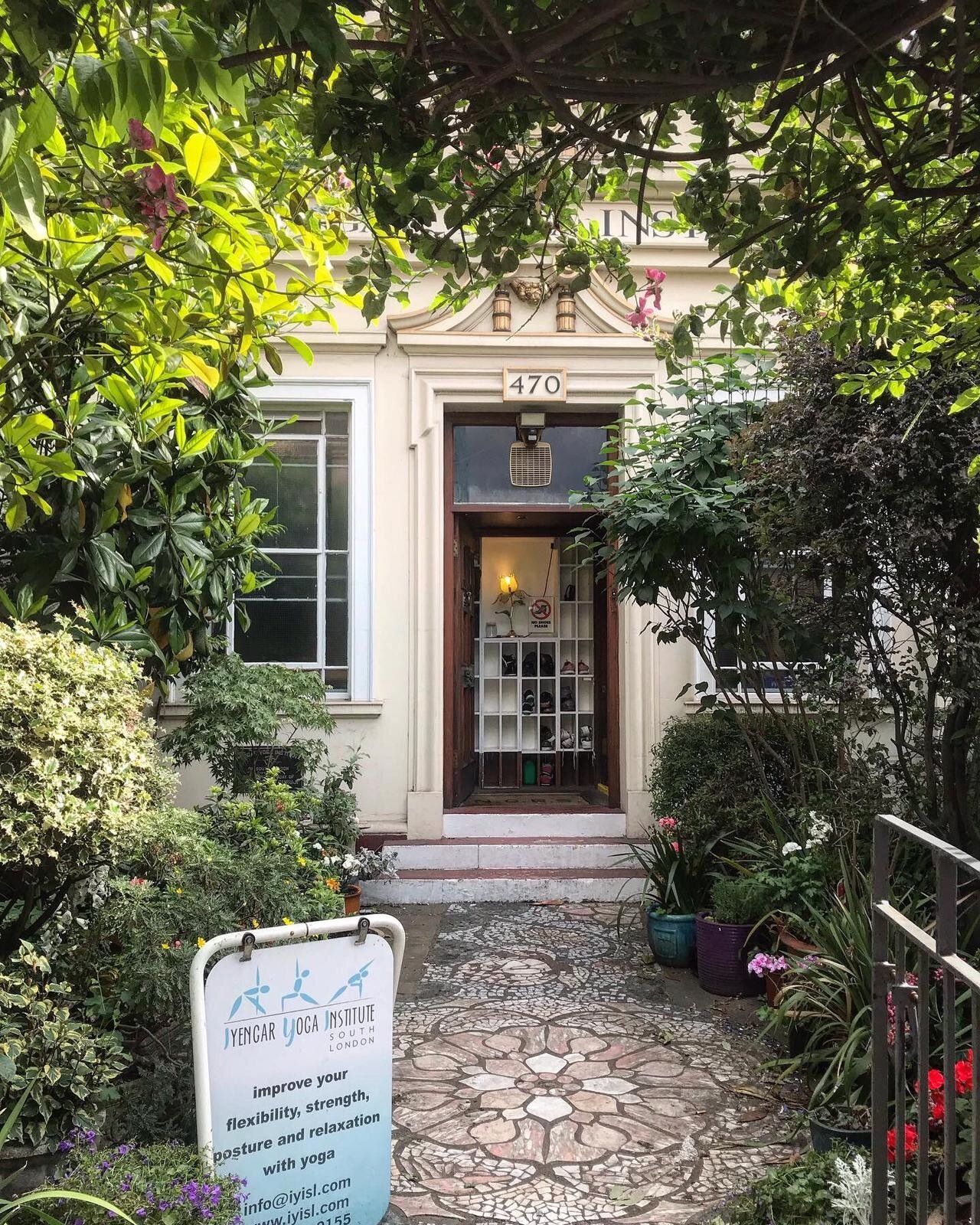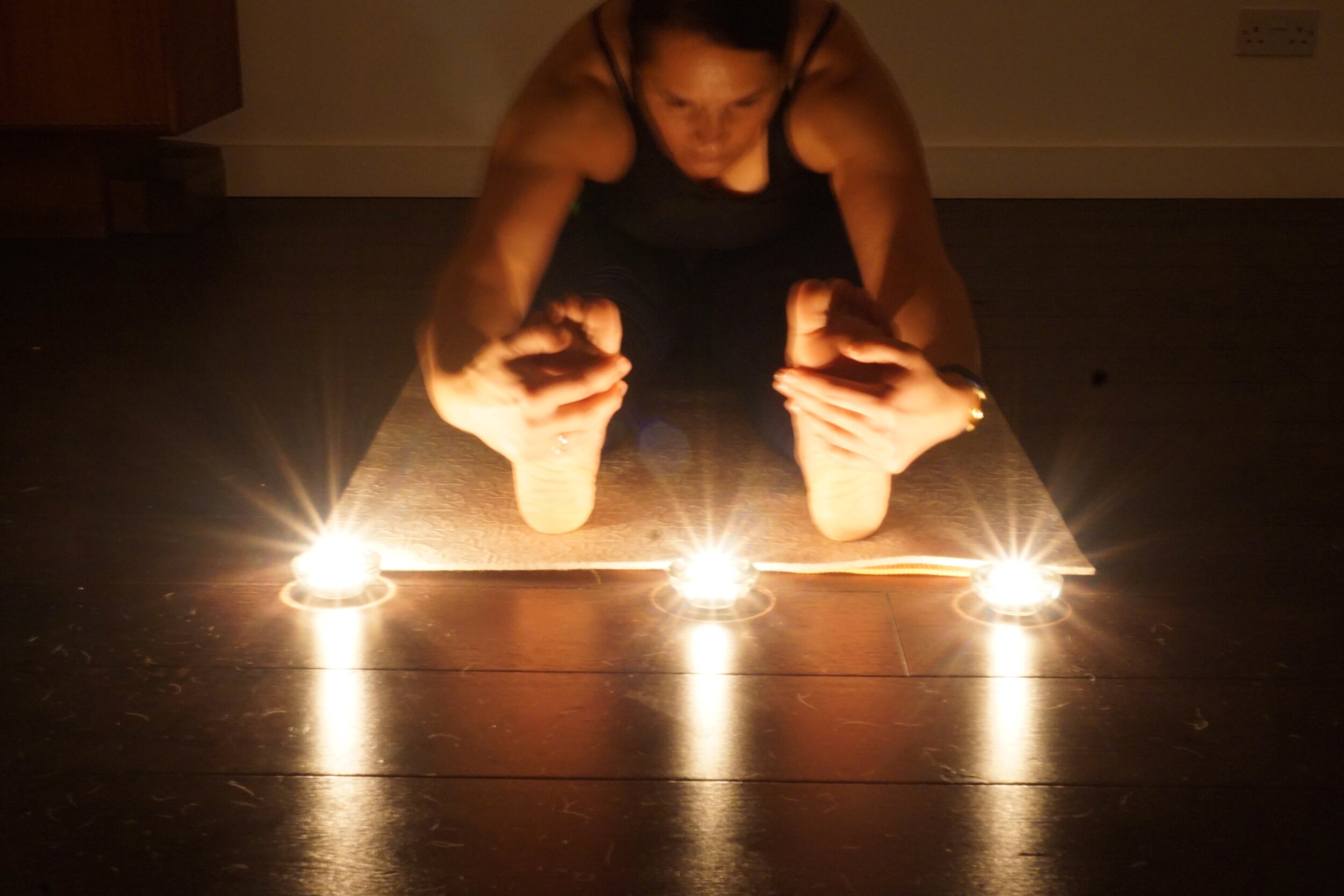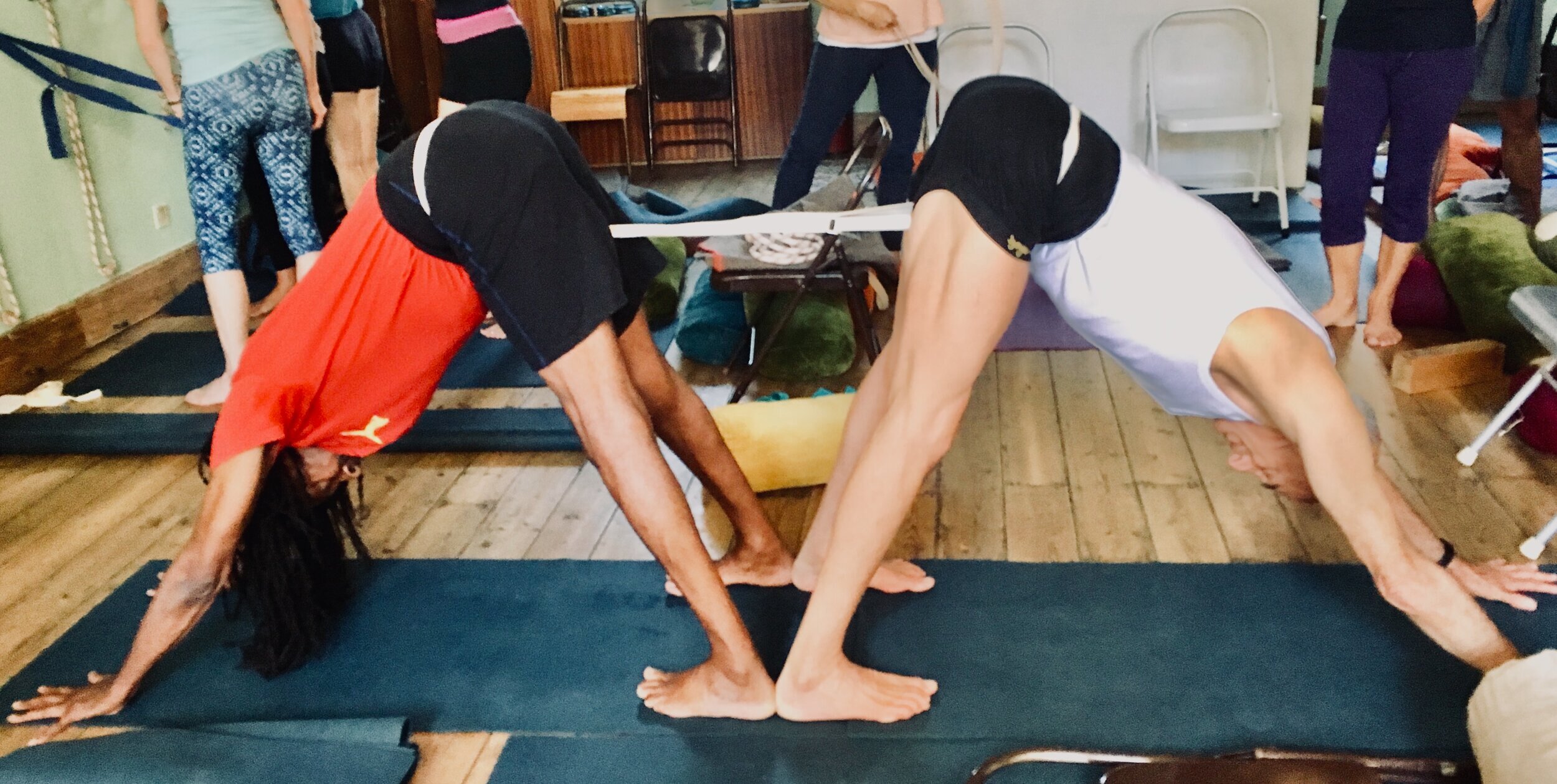This year is the centenary year of BKS Iyengar's (Guruji's) birth which will be celebrated on 14 December 2018. During this year at IYISL we have been privileged to host a series of workshops that have been run by visiting senior Iyengar teachers all of whom were taught directly by Guruji himself. His teaching has profoundly touched and inspired all of them and they all reflect his approach in their own very individual ways.
At the end of August we will host a workshop run by two senior teachers visiting from the U.S. - Eddy Marks and Mary Obendorfer.
Here is an extract from a blog by Eddy Marks where he reflects on how we might continue to absorb what BKS Iyengar taught.
" How will future generations that have never met the Iyengar family be accurately guided? How will Iyengar Yoga go forward without Guruji, and eventually without Geetaji, Prashantji and any of the teachers that actually knew him.
This is a subject I have been actively thinking about for a few decades when it struck me that we would all need to prepare ourselves to continue on the path without the physical presence and moral/ethical strength of our teachers, and that we had better get prepared to stand on our own two feet, for that day was coming.
I remember the day it happened for me. It was 22 years since I first met Guruji and the end of my tenth trip to India in January 2006. It was the first time I left India without feeling like tearing up my certificate and packing it in. On that day, I knew I had finally learned enough to continue practicing on my own for the rest of my life. What was it that made the difference?
I had been aiming at understanding what is this yoga? What are its principles? How does a yogi live, behave, in class and out of class?
There were several practices that made a difference and I would like to share some of those.
1. Reflect on Guruji's life
Someone would come into the library and during the course of conversation would ask Guruji how many hours a day he practiced yoga. Guruji would sometimes say he was always practicing yoga. I was stunned. How could this be? He obviously didn’t mean he was doing Asana and Pranayama for 24 hours a day. What did he mean? For a long time I was baffled, but by watching him in and out of the yoga hall I slowly began to get a sense of what he meant. How does one write a letter, walk, eat, shower and sleep while practicing yoga? There is a wealth of material to reflect on Guruji's life in his book Iyengar His Life and Work as well as the films Guruji, Atma Darsana and Leap of Faith. Take your practice off the mat like Guruji did. It will fill your life with yoga.
2. Experiment
I asked Guruji how he first began to experiment in yoga. I wondered if he had some idea that guided him, but his answer was much simpler than that. He said, “I just tried thousands of things.” From thousands of variations he would catch the good and bad effects. Though most variations were unhealthy, a few had good effects. This was the beginning of the “points.” He would then put all the good points together and try them in various orders to see which order yielded the best effect. This was the beginning of “sequencing.” In this way, Guruji built up his knowledge. Today we start from the known (all the points Guruji gave us), but we miss something critical by not experimenting. We miss the experience of discovery. When we do what we know, we begin and end with what we already know. We do not cross the frontiers of our mind. When we experiment, we begin by not knowing and we watch intently to see what will happen next. From this not knowing springs new knowledge, understanding of cause and effect, freshness and the delightfulness of discovery. We go beyond the frontiers of the mind—we do yoga. Learn to experiment as Guruji did. It will light your path as it did his.
3. Understand the Principles
Guruji said, “The points may change but the principles remain the same.” There are many points but few principles. As the number of points increases, memorizing them becomes difficult, and may lead to confusion when new seemingly contrary points are given. By understanding the principles you can derive the points, or by reverse engineering a point you can derive its principle, though the latter is more difficult. An example of a principle is “container and content.” In this principle, the content of the body has to touch everywhere evenly inside the skin of the body and nowhere should it touch more or less than any other place. Taking the top frontal thigh back in Tadasana, Sirsasana, and the rear leg of Utthita Trikonasana and Utthita Parsvakonasana is a point, which is an example of this principle. Learn the principles that are talked about in many of Guruji's videos and Yoga Rahasya articles. Endeavor to decipher the principles. They will simplify your life and bring clarity and meaning to your actions.
4. Study the Effects
Strive to achieve the effects Guruji wrote for each pose in Light On Yoga. If your Adho Mukha Svanasana isn’t “exhilarating” and if a longer stay in the pose doesn’t remove your fatigue (but causes it), then something is wrong with your pose. Try to understand what has gone wrong, and what you must do to improve it. Guruji is still pointing the way to us through the effects.
5. Look at the photos
Guruji said that after we had practiced yoga for some time, the photos from Light On Yoga would teach us more than the instructions. He suggested taking photos of our Asanas at exactly the same angle to compare each toe, instep, arch, etc etcera to his photos in Light On Yoga and Art of Yoga. Do you think that the arms in Dandasana and Vasisthasana are perpendicular to the floor? Do you think that the hips in Virabhadrasana II are parallel to the floor? Do you think that the foot which touches the floor in Vasisthasana touches on the outer edge of the foot? Better look again! Be aware that you may fall prey to the common tendency to simplify complex poses into straight lines, 90° angles and so forth. Look carefully—very carefully. The photos that are new in Art of Yoga supersede the photos from Light On Yoga. Look carefully at the new photos to find what changed from Light On Yoga. Practice these changes to understand what makes these poses better. Guruji is teaching us so many secrets in every pose if we will only look closely and compare.
6. Read the books
Very few people have read every book and article that Guruji has written. Fewer still are those that can say they have understood everything they read. There is still much to learn from Guruji. He is waiting for you to come hear what he has to say.
7. Watch the videos
There are hundreds of hours of video that capture Guruji's dynamic and illuminating quality. Watch them for content but also watch them to see his speed, skill, compassion and wisdom. Ponder what you see. How did he get to be like that? He is showing us something with every act and gesture.
8. Exchange views
As well as the above individual practices, there are practices we can do as a community.
Guruji didn’t have anyone to exchange views with, but he has provided us with a rich community of practitioners with whom we can exchange views. Get together regularly and practice. You might be surprised and learn something from how other people practice. Ways of practicing that make perfect sense to you because you have a stiff body may make no sense at all to someone who has a flexible body. By exchanging views you will more easily pick out what is universal in yoga and what is merely idiosyncratic.
Lastly, Geetaji told us that before Guruji passed he said, “For those of you who are with me I will be with you watching you from up there.” Though it may be hard for some to believe, when Guruji left his body many felt his presence descend upon them. It is up to us to cultivate that connection and to receive his blessings and guidance in our lives. By coming close to his teachings we come close to him and become receptive to his grace and guidance. He is with us still.
In his light,
Eddy Marks."
In November 2014, Geetaji awarded Eddy Marks and his wife, Mary Obendorfer, the Junior Advanced 1 level of certification. Eddy and Mary travel extensively to
teach Iyengar Yoga to students throughout the U.S. and the world.
They live in Kalaheo, Hawaii.




























